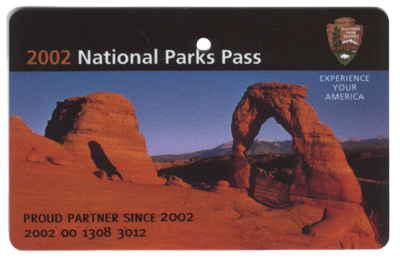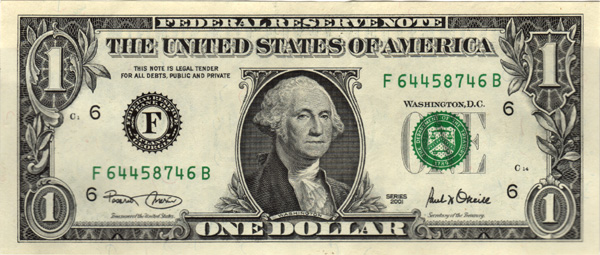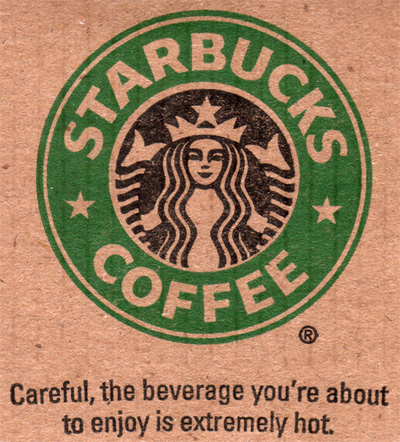Notes about this trip |
![]()
| The Parks | Life in the USA | Driving | Hotels | Restaurants | Photography | Positive | Credits |
|
The national parks of the USA are one of the wonders of the world: they preserve the most beautiful and spectacular sites of the USA. Each park has a visitor centre with very high quality information on the park's subject as well as shows, tours etc. and a shop, Special attention is given to children. Since we planned to visit quite a number of parks, we bought the parks pass: it costs 50 USD but is well worth it. In addition, we found that a fair number of smaller sites were actually part of the parks, though we had not expected this. The Hubbell Trading Post is one example, but there were more. Each time we came across one of these, having the pass saved us paying the entrance fee. |
 |
It's dry and warm in most locations, But it's recommended to have a pullover and a rain jacket: at high altitude there is wind and it can be cold. Rooms, restaurants, cars etc. have air-conditioning, somtimes too much, so there too a light jacket may be useful when you dine out, if only for the draught... In several places we asked for a different table to be out of the airco draught. But it's not too serious.

It is English, but the words mean different things. It looks like food, but it's something else. It looks like a car, but it's a "boat". They say "Entrée" but they mean main dish. Etc., etc. Sometimes it's stranger than if you had to drive on the left side of the road, but it's very interesting and there are many positive sides to it all (though they are not always immediately obvious).
Always have one dollar notes handy: you will tip often. For example the man who carries your luggage, the valet parking driver.
There is a lot more explicit choice: you may want X, and they will ask immediately "X with a, with b, with c or à la Y?". And then you start thinking, often not even knowing what a, b, c or Y might be. For example: "Would you like toast with your eggs?" "Yes please." "Would you like plain, rye, wheat or wholemeal?" "Er..."
But that's the charming part of a foreign holiday.
The average American never makes an international phone call and therefore usually can't tell you how to do it. The hotel operator often does know, but equally often you can't understand what he says because he has a strong Mexican, Chinese or Russian accent... From a hotel room: dial first 9 to get out, then 011 to dial internationally, then 41 for Switzerland etc. It's the 011 that is confusing.
Local calls are free (not from a hotel room obviously), but "long distance" is relatively expensive. And what you assume is close by will often be in a different area code, hence "long distance". Area codes do not cover much population in this big country.
The best thing to do is to buy a calling card, available in the airports, many newspaper kiosk and supermarkets. They are pre-paid but some can be charged up. They do not go into slots in the telephone, but they carry a long code-number that becomes visible only after you buy them and remove the tamper-proof wrapping. They require dialling first to the provider, then keying in the number of the card, then the number you want to reach. That can make up to 36 digits without a mistake!
GSM: in California there is fairly good coverage of GSM. But the USA uses 1900MHz instead of the 900 and 1800 used in the rest of the world. So you need a "tri-band" phone or you rent a local GSM.
You always pay 10-25% more than the price printed on goods because of local taxes etc. that are never included. A hotel room may be advertised as "85$", but you need to add 3.54% General Excise Tax and 6.16% Occupancy Tax so the final bill is 94.7 USD which is 10% more expensive than you might have assumed!
When you go to the restaurant and see swordfish steak for "35$", then there is 6% state tax and 15% service hence it will cost you 42.66 USD. There are tables for computing the 15% service quickly.
This way of computing taxes afterwards is why they are still using 1¢ coins.
Birds, seals, deer, bears, raccoons, etc. Some snakes. Be careful with the bears.
Everyone respects the rules. They drive fast but very disciplined. Motorways have at least 4 lanes in each direction, in the cities often 5 or 6. The lane you take does not seem to be important: the left lane is not faster than the right hand one. Entering and leaving a motorway may be difficult as on-ramps join the motorway before the off-ramps whereas in Europe you can get off before the others come on.
At a narrowing of the road it is the right hand lane that disappears, not the left hand one (rather daft, but that's how it is).
In California (but not in other states), at a red traffic light you can turn right if you first stop and give priority to traffic coming from the left ("right on red after stop"). If, like a good European, you wait for the light to go green the drivers behind you will hoot.
The traffic lights are in the middle or on the other side of the crossing road. This is good, because you can always see them without straining your neck to look up.
Where there is less traffic intersections have four-way stops. This means you always have to stop at the stop sign, then let everyone pass who was at the crossing before you, irrespective of which direction they came from, and then you can go, irrespective of how many drivers have since come to the crossing. Not respecting this first-come first-go rule leads immediately to hooting.
Streets are only indicated by their name, without a following "street". The restaurant is at the "corner of University and Clayton". But the names of the streets are very well displayed at each intersection, much better than in Europe.
Because they do not have standard road signs, you will have to read a lot of little signs: "No left turn", "Left lane must turn left", etc. which is a bit disconcerting if it is your first time in the US.
Directions are by the compass not by place names. We would travel from Geneva to Brig via Lausanne, Montreux and Sion. But no, you take the N1 east, then the N9 south, then the Interstate 62 east. If you don't know the numbers you get nowhere.
Motorways have even numbers if they run east-west and odd numbers if they run north-south.
Example: you leave the San Francisco airport car rental parking to go South. You expect to come to a crossing and see "San Jose" to the left and "San Francisco" to the right. But instead you see "101 South" and "101 North". And then you try to find the map and cause a traffic jam.
Or buying gas. Filling stations look like everywhere else. But in many cases you have to pay before you are allowed to fill up. Most pumps take credit cards, but not always "foreign" ones. Pumps need to be switched on by lifting the handle on which the nozzle rests.
A gallon is 3.78 litres. Fill up when you can, there are fewer stations visible than you may expect.
Conversion of consumption between litres/100km and miles/gallon: divide 236 by the number. 9 litres/100km --> 236/9 = 39.3 miles/gallon; 20 miles/gallon --> 236/20 = 11.8 litres/100km
Total of our trip was over 4500 km.
Rooms are always without breakfast and always for two or four occupants at the same price (there are a few exceptions). That means a large room with two large double beds, a bathroom but rarely a minibar. Rooms are very standardised but better in general than in Europe though of course without any charm. The shower head is always fixed to the wall. Sometimes the shower has only temperature control and you will have to put up with a flow of water that is rather large. There are some sinks where the left and right taps turn in opposite directions (ours always turn left to open and right to close).
There is very often a coffee machine in the room, with coffee and tea. Pay attention to the colour of the coffee bags: red is real and green is decaffeinated!
In big hotels it is often impossible to open the windows, and in some (rare) cases you can not switch the air conditioning off. The door of the room closes automatically and fairly fast, always carry the key! At reception you are often automatically given two keycards, though sometimes one has to ask.
Big hotels and some restaurants have parkings where you have to park your car with "valet parking only". That means you give the keys to a man who parks it for you. Enquire if the parking is free or not.
Ground floor is number 1 (not 0) and the first floor is therefore number 2. That makes using lifts awkward.
Clocks are always 12 hour, i.e. AM/PM and therefore you should take care when setting an alarm, not to be out by 12 hours!
There is a difference between reception, reservation, front desk, room service, operator and bell desk. It's still unclear to me (R.) what to ask to which of these services, but they will redirect you if needed. In smaller hotels it's much simpler.

This is of course the big problem. McDonald's is identical to ours, but...
We bought a cooler (cheap) for picnics and left it with our friends at the end of the trip. Especially for drinks this is a good idea. Ice can be had everywhere. The coffee has improved, but is still not very strong. Should you buy instant coffee to supplement or to brew in the room, be aware that the jars with red tops are real whereas the ones with green tops are decafeinated!
Eat it in a "diner", the smaller the better, unless the hotel has a good restaurant for breakfast. That is sometimes very good but also expensive! On one occasion we paid 32 USD for porridge.
In diners the normal breakfast dishes are pancakes, eggs & bacon or cereals. A full American breakfast is a good thing to start out with early in the day if you intend to skip lunch. In the simple diners people are very friendly, and will make you anything special you may want if they can do so.
We don't know what to recommend. We often skipped it, as at lunch time we were in the middle of a drive; or we tried to find a salad. Not easy unless you wish to eat junk food or want to spend a lot of time and money.
This can be very good if you avoid restaurant chains. Chains are not always obvious (apart of course from KFC, McDonald's etc.). See if the kind of people who are eating there are what you expect. It's not obvious to find a restaurant for dinner: since everyone drives around all the time, restaurants need large parkings and may not be close to the road. They are sometimes inside large buildings or in strange places. The restaurants in the park lodges are in general good, but see our experiences.
There are excellent wines!
On the menu you may see the heading "Entrees". This means "main dishes", not starters!
This was our first trip entirely relying on digital photography. It meant carefully uploading pictures to hard disk storage every night. Robert's laptop was available for this, but for good measure a second copy was kept on an iPod. The iPod has FireWire, but the cameras don't. The IEEE FireWire protocol does allow for intelligent devices, so it is conceivable that a FireWire camera would be able to transfer its pictures to a FireWire disk such as the iPod, without the need for an intermediate computer. That would be very convenient!
Robert's camera was new, so obviously some mistakes were made. Though many were Robert's fault, the camera is not entirely blameless, see the techie stuff
There are quite a number of positive things to say too:
The maps have been scanned from these sources: